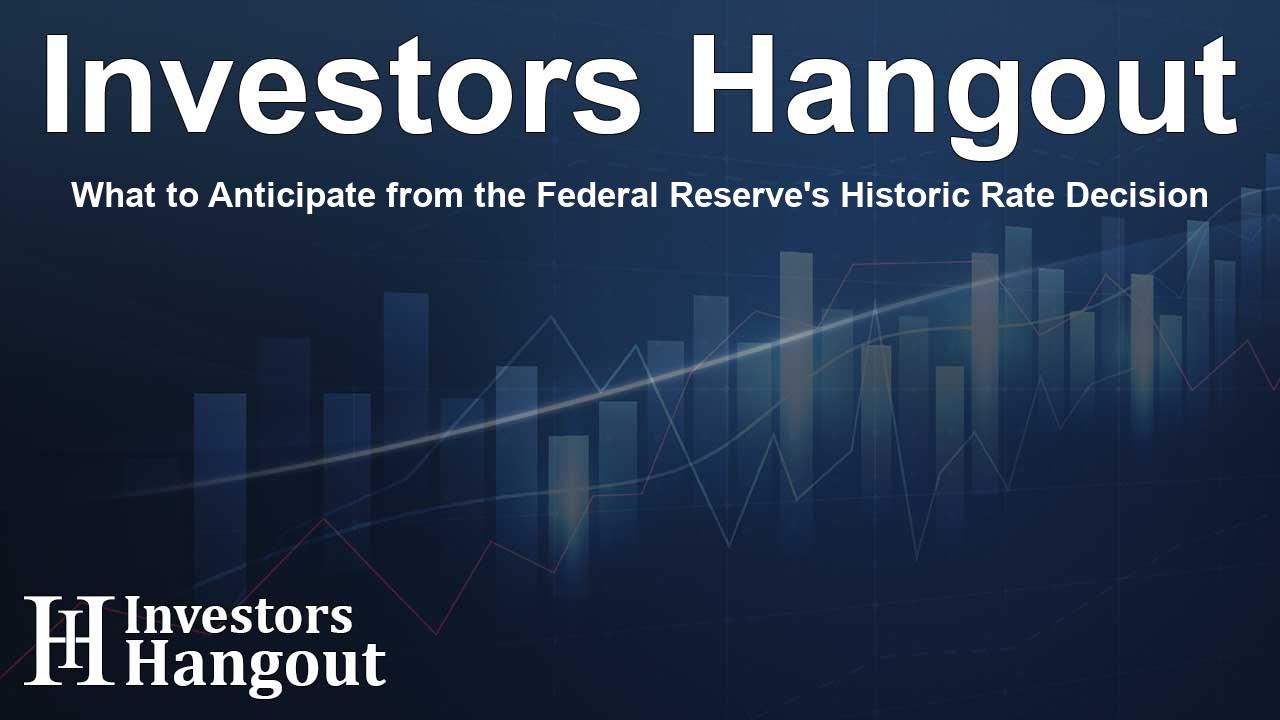What to Anticipate from the Federal Reserve's Historic Rate Decision

The Anticipated Federal Reserve Rate Decision
The Federal Reserve is on the verge of making a pivotal decision as it plans to lower interest rates for the first time in more than four years. This move aims to reverse the series of restrictive measures implemented to tackle inflation. Yet, discussions are vibrant regarding the extent of this rate cut.
The approach taken by Fed Chair Jerome Powell and policymakers will significantly influence how they transition from the highest interest rates seen in the last quarter-century. Their upcoming decisions could reflect a broader message than immediate economic conditions, especially with the backdrop of an impending U.S. presidential election.
Analyzing Rate Cut Possibilities
A cut by half a percentage point is currently projected to have about a 60% likelihood in the futures market. Such a reduction would indicate the Fed's dedication to fostering economic growth and maintaining job opportunities. Powell has been vocal about prioritizing these goals, especially given that inflation is trending closer to the target of 2%.
Conversely, a quarter-percentage-point reduction might align better with the Fed's traditional methods for initiating easing cycles in times that are not crisis-related. This gentler approach hints at the cautious outlook of policymakers, particularly when economic data indicates a slowdown is occurring, albeit without an outright recession looming.
Insights from Financial Strategists
The discussions leading up to the Federal Open Market Committee (FOMC) meeting have stirred varied opinions among strategists regarding the rate decision. The magnitude of the anticipated cut has been at the forefront of their critiques.
Perspectives from Deutsche Bank
Deutsche Bank anticipates the Fed will opt for a 25 basis point cut. They acknowledge the strong arguments on both sides of the debate. While there is a robust case for a larger cut, the data does not necessarily support a substantial shift, aligning with prior communications from the Fed during the blackout period.
ING's Position
ING expresses support for a swift return to neutral monetary policy and believes that Powell may advocate for a 50 basis point cut. However, they caution that convincing other members of the FOMC may prove challenging. Current economic indicators, such as the economy thriving at a 2.5-3% growth rate, result in perceptions of uncertainty amidst soaring equities and low unemployment rates.
Macquarie's Observations
Macquarie notes that while calls for a 50 basis point cut are backed by concerning labor market trends, particularly slow hiring, there is hesitance within the FOMC to initiate a significant cut too promptly, especially when the indicators do not fully reflect a recession.
Bank of America's Strategy
Bank of America suggests that a 25 basis point cut would effectively communicate the Fed's awareness and management of its narrative to the markets. Chair Powell could leverage this opportunity to deliver a dovish tone focused on data-driven decisions, potentially opening pathways for more significant cuts in the coming months based on evolving economic data. They believe that this approach, despite short-term financial tightness, could yield more beneficial outcomes for the Fed in the future.
Conclusion
As the Federal Reserve approaches this decisive moment, it will be crucial to monitor the implications of their actions and the varied strategic opinions that accompany them. The market's reaction, in conjunction with economic indicators, will ultimately determine the success of these policy changes, shaping the economic landscape for months ahead.
Frequently Asked Questions
What is the expected rate cut from the Federal Reserve?
The Federal Reserve is anticipated to cut interest rates, with discussions highlighting the possibility of either a 25 basis point or 50 basis point reduction.
Why is the Federal Reserve cutting rates now?
The Fed aims to stimulate economic growth and job creation while addressing inflation trends, which are nearing the 2% target.
What do financial strategists think about the rate cut?
Strategists from various firms have mixed views, with some advocating for a more substantial cut and others cautioning against it based on current economic data.
How could a rate cut affect the economy?
A rate cut is expected to lower borrowing costs, potentially stimulating spending and investment, thus driving economic growth.
What messages might the Fed aim to convey with this decision?
The Fed may wish to project confidence in managing economic stability while remaining responsive to fluctuating indicators in the economy.
About Investors Hangout
Investors Hangout is a leading online stock forum for financial discussion and learning, offering a wide range of free tools and resources. It draws in traders of all levels, who exchange market knowledge, investigate trading tactics, and keep an eye on industry developments in real time. Featuring financial articles, stock message boards, quotes, charts, company profiles, and live news updates. Through cooperative learning and a wealth of informational resources, it helps users from novices creating their first portfolios to experts honing their techniques. Join Investors Hangout today: https://investorshangout.com/
Disclaimer: The content of this article is solely for general informational purposes only; it does not represent legal, financial, or investment advice. Investors Hangout does not offer financial advice; the author is not a licensed financial advisor. Consult a qualified advisor before making any financial or investment decisions based on this article. The author's interpretation of publicly available data shapes the opinions presented here; as a result, they should not be taken as advice to purchase, sell, or hold any securities mentioned or any other investments. The author does not guarantee the accuracy, completeness, or timeliness of any material, providing it "as is." Information and market conditions may change; past performance is not indicative of future outcomes. If any of the material offered here is inaccurate, please contact us for corrections.